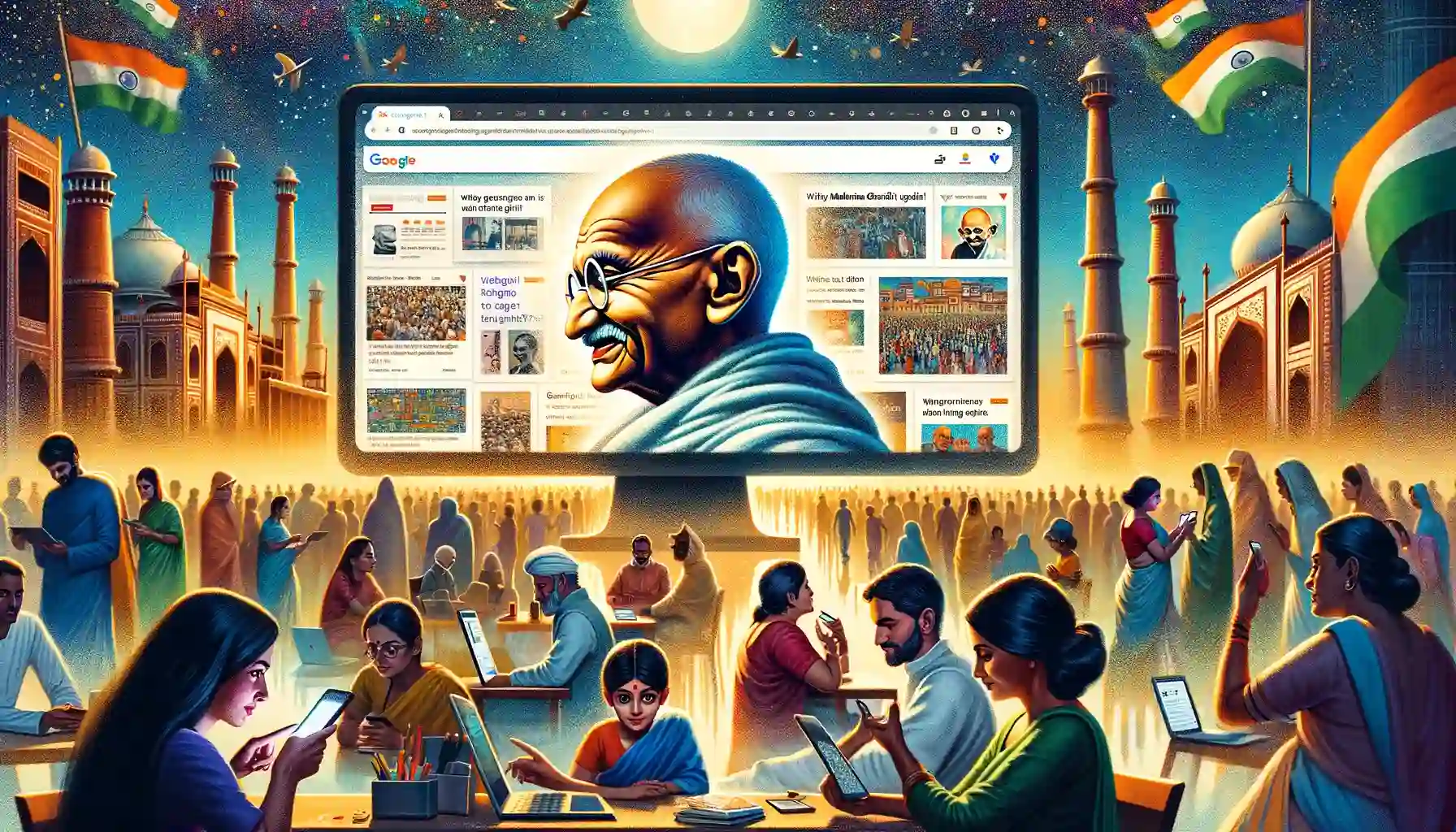In the days leading up to and following Gandhi’s birth anniversary on October 2, a new wave of dissent has emerged under the slogan ‘Not My Mahatma.’ This phrase reflects a growing segment of Indians who once revered Gandhi as the ‘Father of the Nation’ and ‘Bapuji’ but now question the darker aspects of his political choices and leadership.
The criticism largely centres on his role in the Partition of India, his perceived favouritism towards Jawaharlal Nehru as the country’s first Prime Minister, and his controversial stance on Hindu-Muslim relations.
This shift in perception marks a significant change in how Gandhi is remembered, with many questioning whether his vision for India truly aligned with the country’s needs.
One of the most prominent grievances of the ‘Not My Mahatma’ movement is his role in the Partition of India in 1947. The division of India and Pakistan was a traumatic event, leading to the mass displacement of millions and the loss of countless lives in communal violence.
Critics argue that Gandhi, despite advocating for non-violence, failed to prevent the horrors of Partition.
While history acknowledges that he opposed the idea of dividing the nation, there is a growing belief that his political decisions in the years leading up to 1947 contributed to the inevitable split.
A particular point of contention for critics is Gandhi’s close relationship with Jawaharlal Nehru, whom he allegedly favoured for leadership over other prominent figures, such as Sardar Vallabhbhai Patel. Some believe that Gandhi’s insistence on Nehru as India’s first Prime Minister came at the cost of national unity.
Nehru, who advocated for a more secular and socialist approach to governance, was often seen as being less sympathetic to Hindu nationalist causes than Patel. The ‘Not My Mahatma’ narrative holds Gandhi accountable for sidelining Patel, whose leadership, some argue, could have led to a different trajectory for independent India — one that perhaps avoided the violent Partition altogether.
Another central grievance expressed by those engaging in the ‘Not My Mahatma’ dialogue is Gandhi’s stance on minority appeasement, particularly with regard to India’s Muslim population. Throughout his life, Gandhi worked for Hindu-Muslim unity, but his critics claim that his approach often came at the expense of Hindus.
They cite his insistence that Hindus should bear the brunt of communal violence, believing that any retaliation would worsen divisions between the communities. Such a stance, they argue, unfairly placed Hindus in a position of vulnerability, particularly during the violent aftermath of Partition.
One thought that has been repeatedly brought up in recent discussions is Gandhi’s statement that Hindus should bear and grin even if the last of them is decimated, while Muslims should be prioritised in terms of access to the country’s resources.
Although this statement is debated in historical circles, its perceived implication — that Gandhi was biased in favour of the Muslim minority (who, in fact, are now the second largest majority community in the country) — has been a rallying point for many critics. They argue that this appeasement set a dangerous precedent, one that has continued to shape India’s political landscape, where minority rights are often pitted against the concerns of the Hindu majority.

The ‘Not My Mahatma’ slogan underscores a broader trend of re-evaluating historical figures through a more critical lens. In this case, Gandhi, who has long been portrayed as an almost saint-like figure, is now being viewed in a more divisive light.
For those who have adopted the slogan, Gandhi’s failings outweigh his achievements. The notion that he could be responsible, at least in part, for the tragedies of Partition and for policies that seemingly privileged the minority over the majority has cast a shadow over his legacy.
This critical reassessment is not entirely new, but the recent resurgence has amplified the voices of those who feel Gandhi’s contributions to India are over-celebrated. Figures such as Subhas Chandra Bose, Sardar Patel, and Bhagat Singh are often invoked as alternatives to Gandhi, with some arguing that their methods and visions were better suited to India’s challenges.
For those engaging with the ‘Not My Mahatma’ narrative, these leaders represent a more assertive, nationalist approach, in contrast to what they view as Gandhi’s compromising and overly idealistic vision for the country.
As the ‘Not My Mahatma’ mantra gains voice, it is clear that Gandhi’s legacy is more complex than the simplified version often taught in schools and presented in public discourse. Gandhi remains a towering figure in India’s history, credited with pioneering the non-violent struggle for independence.
However, the growing critique of his decisions during key moments in India’s political evolution, particularly around the Partition and his policies regarding religious communities, suggests that the public is ready for a more nuanced conversation.
Rather than reducing Gandhi to a single narrative — whether of heroism or failure — perhaps the lesson from this movement is the need to grapple with the full spectrum of his legacy. History is rarely black and white, and Gandhi’s life, with its contradictions and imperfections, is a reflection of that complexity.
While some may now reject him as their Mahatma, it is undeniable that his influence on India’s freedom struggle and moral philosophy will continue to shape the country for generations to come. The challenge lies in how future generations choose to remember one of the most iconic figures in world history.




